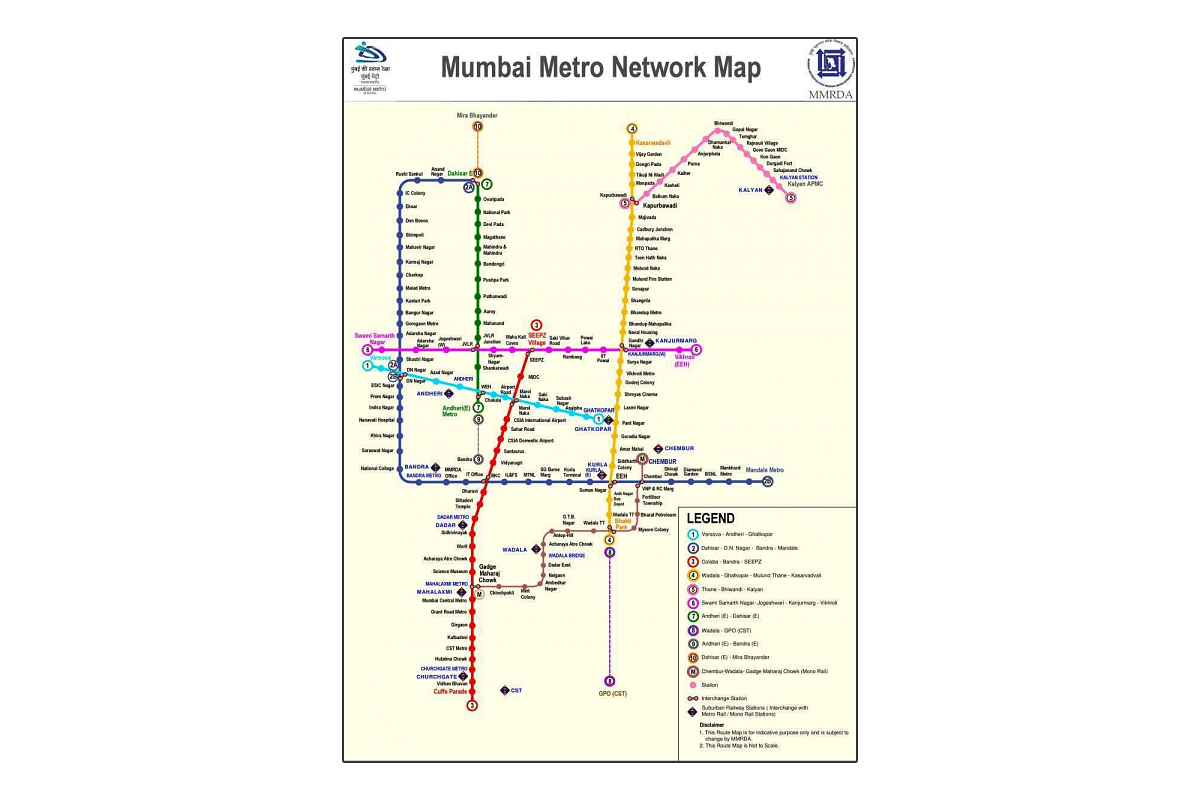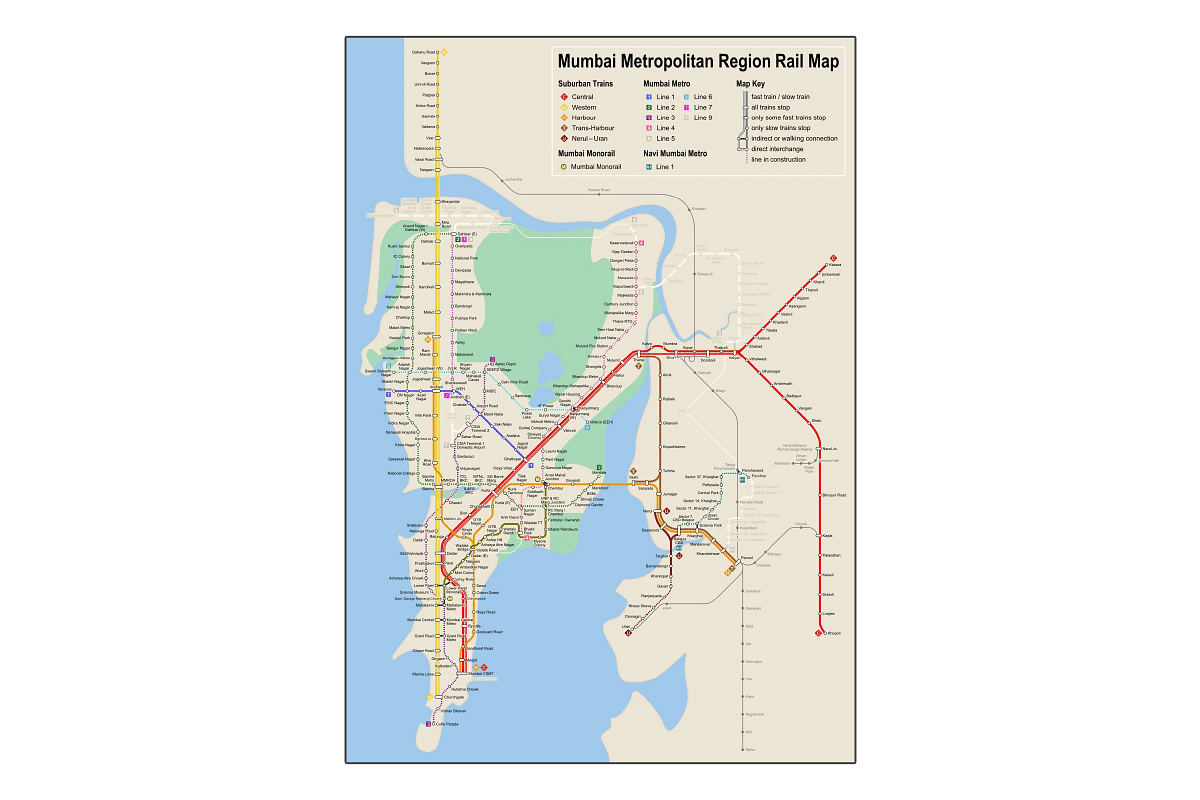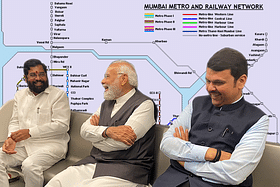The metro network is expected to cater to at least one crore commuters on a regular basis with its estimated completion by 2026.
On 19 January 2023, Prime Minister Narendra Modi inaugurated Mumbai Metro Rail Line-2A and Line-7. With the launch of these two metro lines, the Mumbai metro now has three operational lines out of its overall planned network of 14.
The foundation stone for these metro projects was laid by the Prime Minister himself in October 2015.
The 18.6-km-long metro line 2A connects Dahisar East and DN Nagar (yellow line), while the 16.5 km long metro line 7 connects Andheri East to Dahisar East (red line).
The Mumbai Metro Plan
Metro systems have proven to be crucial for transforming mobility in Indian cities, promoting economic growth and physical dynamics.
The Mumbai metro has been envisioned to ease travel within the city and also to support the expansion of the city itself. By offering extensive connectivity through its 14-line network, the transit system will connect the densely populated Mumbai city and the broader metropolitan area.
Once built in its entirety, it will span over 300 kms and will have more than 200 stations. With three active lines spanning over 50 km, the MMRDA has been working to finish work on the rest of the network.
Understanding The Extensive Network
The Mumbai metro network will be a mix of elevated rails and underground lines.
The currently operational lines include Line 1 or the Versova-Andheri-Ghatkopar corridor. This 11.4 km long stretch has connected the eastern and western suburbs to Western and Central Railway. This has decreased travel time as compared to the suburban railway network, which took significantly longer.
The recently inaugurated Lines 2A and 7, are two parallel elevated corridors running along a 35-km stretch along the Western Express Highway (WEH). Line 2A will serve as an alternative to the western railway line. Expanding further, it will link to localities in the East, while also connecting to the major business districts.
The under-construction networks such as the Colaba-Bandra-SEEPZ corridor, will reach the extreme south of Mumbai, an area which lacked public connectivity previously. The line will run through central Mumbai extending 33.5km to the north.
The only fully underground metro line will support the heavy transit load and is expected to serve close to 17 lakh people.
Similarly, the other lines of the vast matrix will provide interconnections between WEH, Eastern Express Highway (EEH), Western Railway, Central Railway, and the monorail. It will serve most of the busy settlements along with the business and commercial districts as it covers these routes.
Furthermore, the metro will connect the city to the airport—line 7. The stretch extends to provide a long linkage from Thane to the airport.
Another significant line, the orange line, will join Thane to Bhiwandi and Kalyan. It will provide dedicated transport systems to growing industrial regions, such as Bhiwandi and populated settlements dependent on road connectivity. The network will connect these areas to the Central Railway line.


Need Of The Vast Network
Due to the high population density in Mumbai, the public transit systems currently in place are unable to adequately meet the demand for transportation in the city.
The city’s primary mode remains the suburban rail system. The 400 km rail system sees about 80,00,000 daily commuters. It remains severely overcrowded during peak hours exceeding carrying capacity by more than four times.
The suburban railways network runs North and South. Given the linear layout, location of business areas and the ever-widening spread of the suburbs, it has caused inconvenience to population and commercial transit in many localities.
Mumbai faces numerous challenges as it continues to grow and urbanise. The central areas with greater concentration are heavily under land crunch. This has led to issues of housing affordability, increased demands for basic resources and inadequate infrastructure and resources for all.
Many of the sprawled settlements within the city’s central regions are undergoing redevelopment. However, this alone has not been enough to fulfil the growing demand and economic potential of Mumbai.
Consequently, the development is expanding further to the areas that have potential land availability and scope for aiding the economic prospects.
The metro system has been planned to incorporate this expansion and support the future developing localities.
The network through Thane, Kalyan, Taloja, will be running along regions that are now experiencing rapid development to accommodate Mumbai’s growth. Currently, these areas are not very well connected to central Mumbai.
Many areas along the proposed metro networks are experiencing increase in residential demand and major enhancements to the real estate.
Similarly, Navi Mumbai will see great escalation in the real estate and housing sector with the linkages provided through these projects.
Additionally, the transit system will be supported by the under-construction trans harbour link and the Mumbai coastal road project. These emerging road projects are envisioned to seamlessly interlink the major areas with Mumbai’s expansion. The trans harbour will connect the Mumbai city to Navi Mumbai while the coastal road goes from the south of Mumbai to Kandivali.
The long-term perspective of the metro project with the other sophisticated transit projects will evidently reap multiple benefits for the city transportation, urban development and economic growth.
The metro network is expected to cater to at least one crore commuters on a regular basis with its estimated completion by 2026.
As the economic capital of India, the progress of Mumbai and its population well deserve such advanced transport infrastructure.


